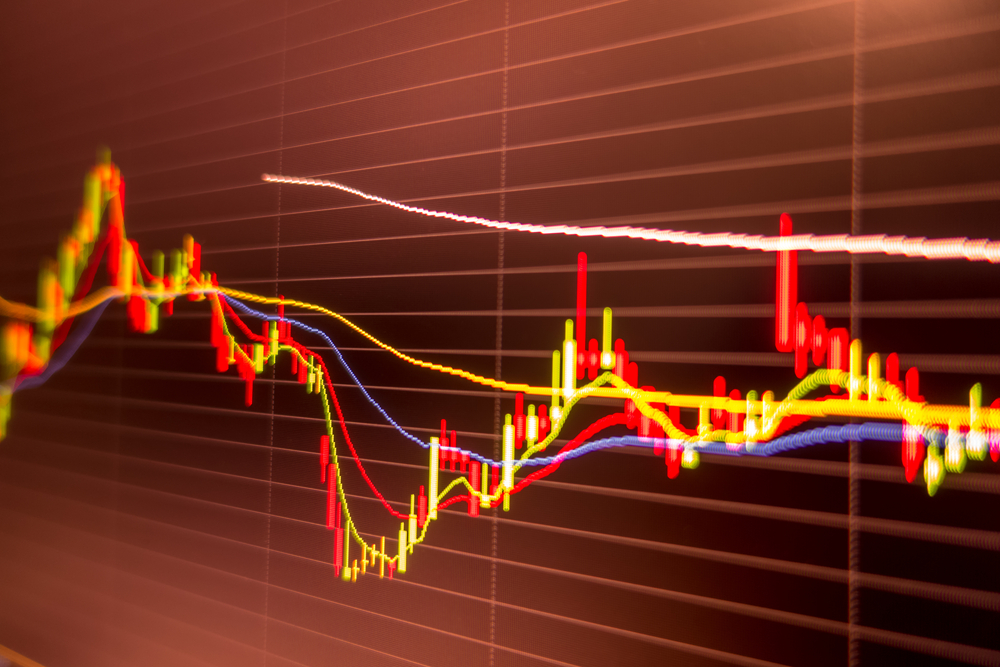
NEW YORK— Technology and health care companies jumped Tuesday as U.S. stocks started the new year the same way they spent the last one: rising steadily and setting records. Energy companies, which struggled in 2017, also climbed.
Asian markets rose after surveys in China and India showed continued manufacturing growth in the world’s most populous countries. U.S. stocks followed suit as investors snapped up shares of companies that should benefit from faster economic growth, including technology, health care and materials companies, just as they did last year. The Nasdaq composite busted through another milestone as it closed above 7,000 points.
“We’ll continue to see many of the themes from last year play out,” said Kate Warne, an investment strategist for Edward Jones.
She said the global economy should keep growing and businesses and consumers around the world will continue to spend more money. It helps that interest rates are low, and governments in areas that reduced their spending during the Great Recession are becoming more willing to spend.
The Standard & Poor’s 500 index rose 22.20 points, or 0.8 per cent, to a record 2,695.81. The Dow Jones industrial average climbed 104.79 points, or 0.4 per cent, to 24,824.01. The Nasdaq composite jumped 103.51 points, or 1.5 per cent, to 7,006.90. The Russell 2000 index, which consists of smaller company stocks, gained 14.50 points, or 0.9 per cent, to 1,550.51, also a new high.
The Nasdaq had its best opening day since 2013 as the big technology companies that dominated in 2017 got the new year off to a good start. Facebook rose $4.96, or 2.8 per cent, to $181.42 and Apple climbed $3.03, or 1.8 per cent, to $172.26. Chipmaker Nvidia climbed $5.85, or 3 per cent, to $199.35.
Drug and medical device companies led the health care sector higher. Hepatitis C and HIV drug maker Gilead Sciences gained $2.46, or 3.4 per cent, to $74.10. Abbott Laboratories, which sells medications, infant formula and medical devices, picked up $1.72, or 3 per cent, to $58.79 and Baxter International gained $2.53, or 3.9 per cent, to $67.17.
Retailers also rose. That included Amazon, which added $19.54, or 1.7 per cent, to $1,189.01. Retailers that struggled last year, including big box and department stores, also fared well. Target rose $2.38, or 3.9 per cent, to $67.63 while Kohl’s picked up $2.12, or 3.9 per cent, to $56.35. Early indications suggest shoppers had a busy holiday season and investors will look for confirmation of those reports in the weeks to come.
Bond prices slid. The yield on the 10-year Treasury note rose to 2.46 per cent from 2.41 per cent. The yield on 2-year note rose to 1.92 per cent from 1.89 per cent.
The increase in bond yields sent high-dividend stocks like utilities, household goods makers and real estate companies lower. Higher bond yields make those stocks less appealing to investors seeking income.
Investors bet that the markets will stay calm, too. The VIX, a measurement of how much volatility investors expect, moved sharply lower. It’s been at historic lows since April.
Weight Watchers International climbed after it struck a deal with producer and recording artist DJ Khaled, who will represent the brand to millions of followers on Snapchat, Twitter, Instagram and Facebook. Weight Watchers got a big boost a few years ago from a deal with Oprah Winfrey that also included a substantial investment in the company. Its stock added $3.55, or 8 per cent, to $47.83.
Bitcoin rose after the Wall Street Journal reported that the venture capital firm Founders Fund, co-founded by Peter Thiel, bought around $15 million in bitcoin in mid-2017. The report cited anonymous sources. The digital currency rose 11.1 per cent to $14,901, according to Coindesk. Thiel did not immediately respond to request for comment.
Benchmark U.S. crude fell 5 cents to $60.37 a barrel in New York. Brent crude, used to price international oils, fell 30 cents to $66.57 barrel in London. A rally late in the year sent crude oil to its highest price since June 2015.
Natural gas futures climbed 10 cents, or 3.5 per cent, to $3.06 per 1,000 cubic feet. Natural gas is mostly used to heat homes and demand often rises in frigid weather.
Wholesale gasoline fell 3 cents to $1.76 a gallon. Heating oil declined 1 cent to $2.06 a gallon.
Gold rose $6.80 to $1,316.10 an ounce. Silver rose 6 cents to $17.21 an ounce. Copper lost 2 cents to $3.28 a pound.
The dollar fell to 112.27 yen from 112.64 yen. The euro rose to $1.2055 from $1.2012. The dollar slipped steadily in 2017. The improved global economy was responsible for much of that decline, however, and the weaker dollar makes U.S. exports less expensive in other markets.
Germany’s DAX fell 0.4 per cent and France’s CAC 40 shed 0.5 per cent. The British FTSE 100 retreated 0.5 per cent.
The Hang Seng in Hong Kong gained 2 per cent to and Seoul’s Kospi gained 0.5 per cent. Markets in Japan were closed for a holiday.